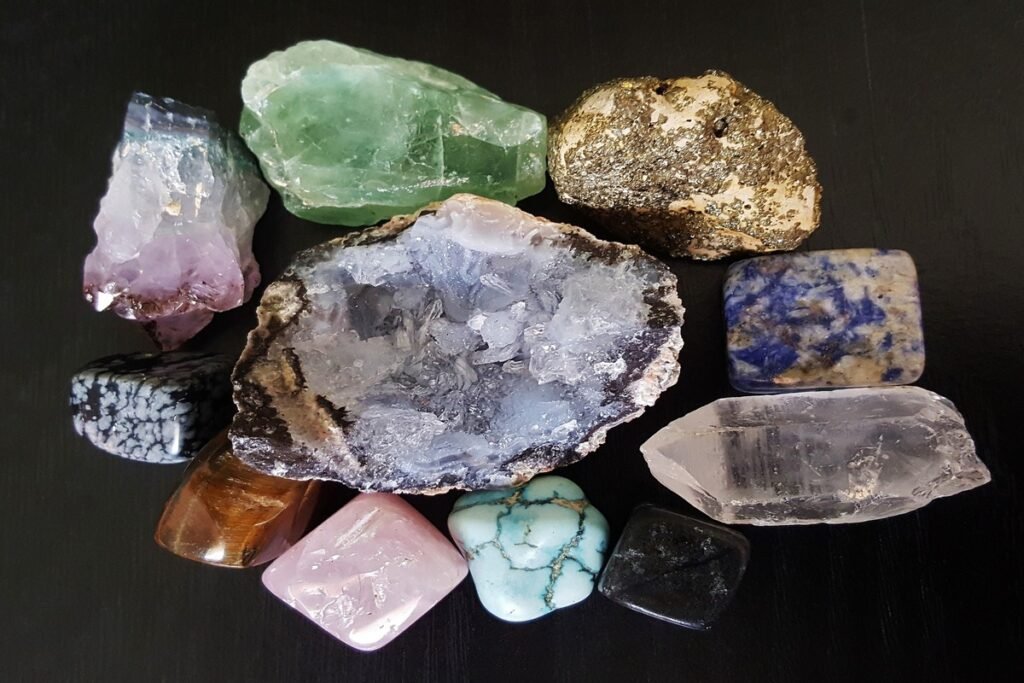Ever since humans discovered jewelry thousands of years ago, its importance in society has only grown over time. To us, jewelry is more than just an accessory; it’s a part of our identity. We wear jewelry because it’s a tangible representation of what we value–love, traditions, friendships–and the milestones we’ve reached–engagements, weddings, and graduations. A variety of precious metals, stones, and crystals make up jewelry, and we love wearing it for the aesthetic benefits it gives. And if you already adore jewelry because of its beauty, then discovering the meaning behind your favorite gemstones and jewels will surely make you appreciate them more.
Do you want to know what gemstone you should give a friend who needs clarity or who has fickle emotions? If yes, then you’re in the right place. In this guide, we’ll tell you all about the meanings attached to the precious stones and crystals on your jewelry and the impact they can have on your lives.
Gemstones Meanings
What do precious stones symbolize? What do different crystals represent? These are questions that many of you might not know the answers to. Gemstones and crystals are indeed both pleasing to the eyes. However, their beauty is not the only thing that makes them valuable. These elements possess metaphysical properties, and it would be useful to know what each of them signifies. Here’s a look at the meanings behind some of your most favorite gemstones. We’ve also arranged them in order of the month they represent, so it can also double as your birthstone guide!

Garnet
The January birthstone’s name comes from the Latin word garanatus, which refers to the red seeds of the pomegranate fruit. In Greek mythology, Hades gave Persephone pomegranate seeds as a token of safety before she left him. In this context, some cultures believe that garnets grant safe returns to travelers and eradicate the emotional distance between separated lovers. Although it comes in a range of colors, the brownish-red tone is the most popular shade of garnet. It also inspires passionate action in individuals.
Amethyst
The February birthstone got its name from the Greek word amethystos, which means sober. Ancient Greeks believed this gorgeous purple stone guarded against intoxication. Amethyst promotes calm, clarity, and tranquility. This semi-precious gem also helps its wearers get in touch with their feelings due to its spiritual qualities.
Aquamarine
Like many blue gemstones, the birthstone of March is linked to tranquility and clarity of mind. The name aquamarine means seawater, which is why early sailors believed that it can protect them from the dangers of the ocean. It also aids in courage and quick thinking in times of crisis. It’s also known to rekindle the love between married couples, which makes it an ideal anniversary gift.
Diamond
The April birthstone is inarguably the most popular and sought after precious stone in the world. Because of its fame, it has been the subject of many songs, movies, and literature. Diamonds are the hardest naturally occurring substance on the planet and the only gemstone comprised of one pure element: carbon. Because of these physical properties, diamonds represent power, innocence, incorruptibility, and longevity. These crystals are also the traditional choice for engagement and wedding jewelry as they signify strong and enduring love.
Emerald
The May birthstone is the gem for love, protection, and healing. Dubbed “the stone of successful love,” it moves the soul, opens up the heart, and offers hope, compassion, and harmony in all areas of romance. As the gem of Venus, many believe that it aids in fertility.
Queen Cleopatra especially loved these gemstones; she would always adorn her robes, jewelry, and crowns with them. The deeper and more vivid the green hue, the more valuable the stone. Emeralds are among the rarest of gems, and most of them have birthmarks. Instead of taking away its value, people celebrate these flaws like a type of fingerprint.
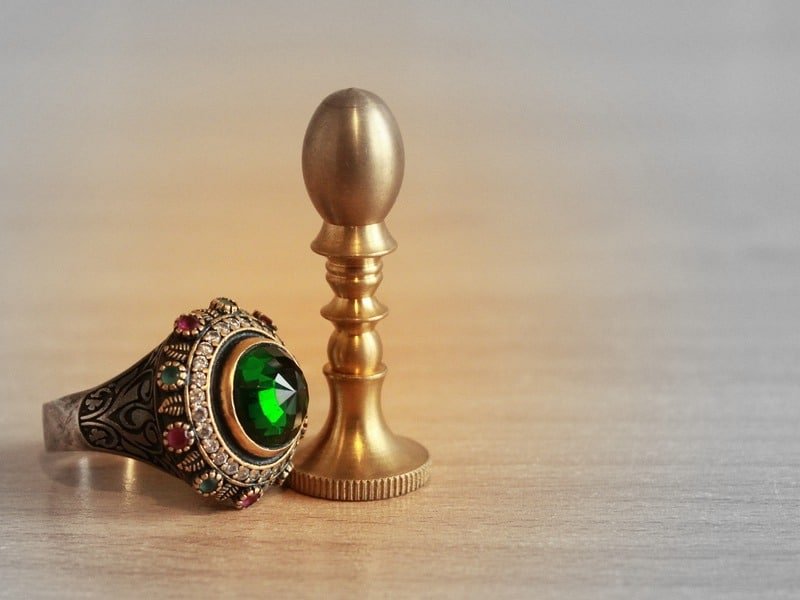
Mother of Pearl
Like our mothers, this stone gives out a loving and nurturing energy. It helps its wearer calm their worries and fears. The June birthstone also stands for purity, femininity, and innocence, which is why bridal garments and jewelry often feature them. This classy gemstone boasts of a timeless look and has long been a symbol of perfection.
Ruby
Ruby’s deep red hue is comparable to the color of blood. For this reason, numerous cultures believe that it holds the power of life. Today, it’s the popular choice for engagement rings as well as wedding rings. Its red color symbolizes passion, power, and love. It also promotes enthusiasm, willingness to try new things, and the motivation to see them through. Like emeralds, nearly all rubies have marks that add to their exceptional quality.
Peridot
Unlike most gemstones, the August birthstone comes only in greenish colors, from lime green to dark olive green. Its unchanging color, whether in daylight or candlelight, is a quality especially loved by Romans, which is why they called it the “evening emerald.” Peridot is associated with characteristics such as problem solving and strong will. It’s also used as a charm against jealousy and used to promote happiness in a marriage.
Sapphire
The September birthstone symbolizes wisdom and clarity. This electric blue gem is the “stone of prosperity”; it helps people achieve their dreams. Sapphire signet rings became a mainstay in royal courts as well as the Church. Many believe that it has the power to protect its wearers from harm. The meaning of gemstone colors vary, but blue gems and their meanings are often linked to inner peace. British Crown Jewels and Kate Middleton’s engagement ring—which was Princess Diana’s—feature this gem.
Opal
Opal, the October birthstone, forms when bits of silica gel collect into the crevices of rocks. It’s one of the luckiest and most magical of all gems because it shows different colors depending on the lighting. It was once known as the Queen of Gems because of this unique quality. No matter what shade opals show, they always remain beautiful. Because of this feature, these stones are said to possess the qualities of warmth, charisma, and adaptability. This luminous stone also symbolizes fidelity and assurance.
If you’ve ever wondered what gem represents death, then this stone is the answer. It’s surprising considering its undeniable beauty and all the wonderful meanings attached to it. These gems, however, have a mixed history. Opal was a famous stone during the Black Plague of the 14th Century. According to stories, when those wearing opals died, their gemstones would apparently lose their color entirely.
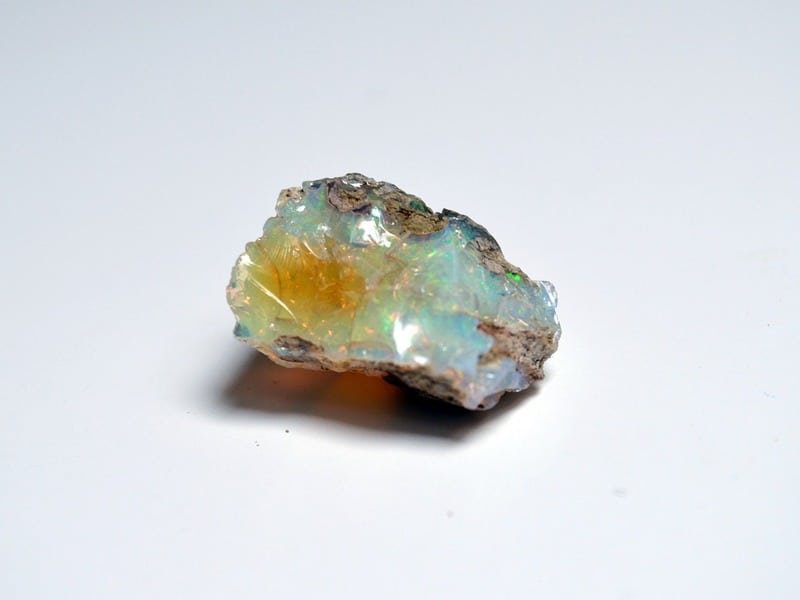
Topaz
The November birthstone is the stone of calm and balance. Gem cutters from the olden times said that this gem also aids in higher thinking. This could be the reason why scholars and artists prefer it. Topaz comes in a variety of colors: blue, yellow, honey, brown, green, red, pink, or sometimes no color at all. However, its most valuable shade is orange with pink undertones. Ancient Egyptians and Romans revered this golden gem and associated it with the sun for its protective and healing qualities.
Turquoise
The December birthstone is one of the oldest gems used by man for adornment. It’s always been associated with nature and possesses healing properties. It also has the ability to protect its wearer from harm. Turquoise balances our center of speech and self-expression—the throat—and helps the wearer speak words of wisdom and truth. It’s for this reason that Egyptian Pharaohs liked wearing them on their necks. This stone comes in opaque, light to dark blue, or blue-green colors, with its most stunning hue being an intense blue.
Other Precious Stones and Their Meanings
Moonstone
This dreamy stone, which got its moniker from its lunar shimmer, comes in several milky hues. A stone of feminine energy, moonstone helps align its wearers more deeply with their intuition. It also promotes creativity, good fortune, and helps soothe a person’s constantly changing emotions.
Lapis Lazuli
The mystical blue color of lapis lazuli reminds one of royalty and deities; it may even be where the idea of royal blue originated from. It’s the stone of awareness, truth, and wisdom. Its wearers will be able to activate their inner destiny and take pleasure in self-expression. Lapis Lazuli promotes the qualities of compassion and honesty. It encourages inner confidence and the strength to speak openly and from the heart.
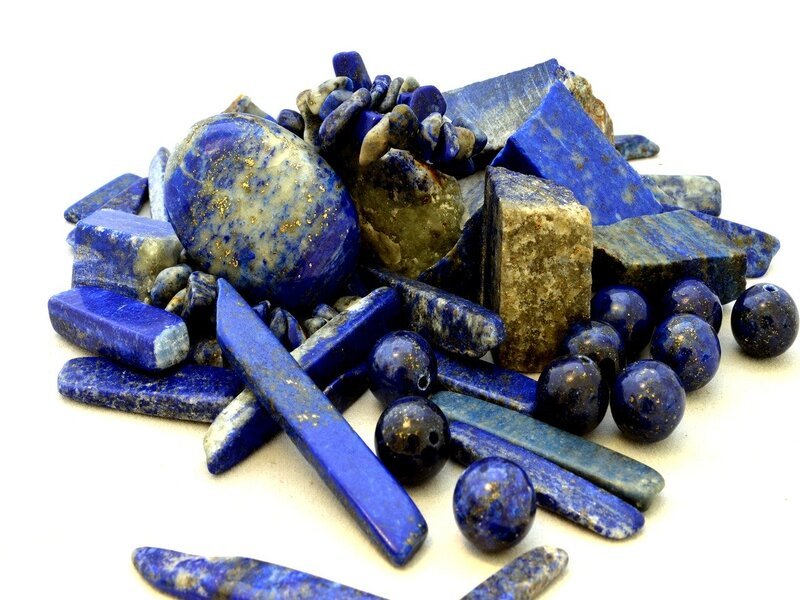
Citrine
This golden yellow gemstone is often linked to self-esteem and open-mindedness. With its sunny appearance, citrine is often associated with positive qualities, such as optimism, self-confidence, and creativity. It’s known as the “stone of success,” and has been used in charms that promote abundance. Yellow gemstones and their meanings, such as citrine, are also thought to invoke feelings of happiness and joy.
Indian gemstones and their meanings
Diamonds might be the most coveted gemstone in the Western world, but in India, women’s best friends are colored gemstones. India’s love affair with colored gems dates back thousands of years, and the traditional jewelry range in the country can be classified into three categories: spiritual, bridalwear, and temple. Precious gemstones have become so embedded in their culture, that most of their occasions, rituals, and ceremonies couldn’t go without them. Here are four of the most commonly used gemstones in Indian jewelry and their meanings in Vedic Astrology.
Yellow Sapphire or Pukhraj
According to Indian astrology, Jupiter’s gem is the yellow sapphire. Jupiter is the teacher of the Gods, and Indians believe this stone can bring desired wealth, wisdom, prosperity, marital bliss, good health, and good children.
Blue Sapphire or Neelam
This gem is governed by the mighty Lord Saturn. It’s one of the strongest and the fastest acting gemstones, and many individuals claim that its effects include a gain in wealth, a resolution to a problem, a windfall gain, and more.
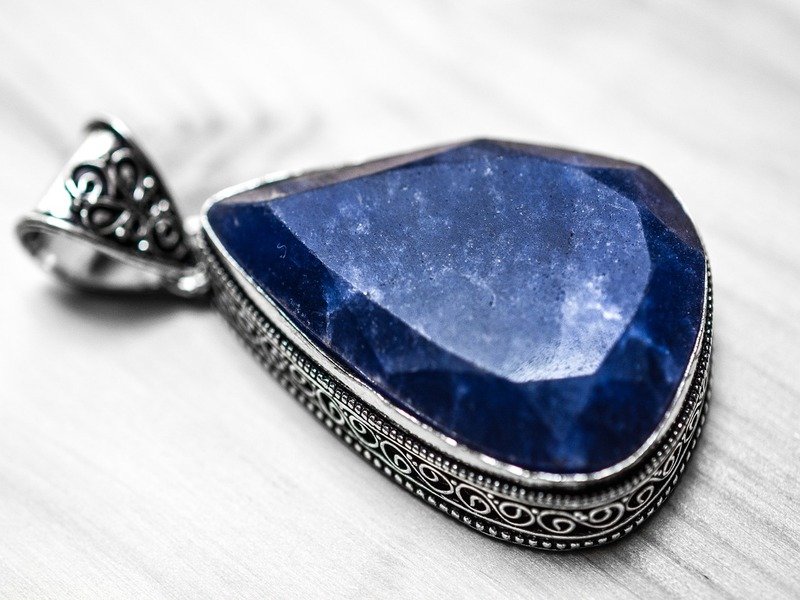
Ruby or Manik
Ruby is the gemstone of the Sun; therefore, it bears its main quality: power. It’s the strongest heavenly body in the solar system, and having proper Sun placement causes people to be very energetic and makes them the center of attention.
Emerald or Panna
Emerald represents the planet Mercury and bears a strong influence over one’s life. Its many benefits include good health, wisdom, prosperity, creative skills, and blissful marital experience.
What are the Rarest Gemstones on Earth?
There are about 200 varieties of naturally-occurring gemstones known to man. A number of these gems are so rare that their value goes beyond many of the world’s most precious gems, such as diamonds, emeralds, sapphires, and rubies. In this list, we’ve rounded up four of the most exceptional gemstones discovered by man.
Tanzanite
This gem is a stunning blue variety of the mineral zoisite. It is named so because this stone is only found in the Merelani Hills in northern Tanzania. It was during the 1960s when tanzanite was discovered in commercial quantities, and since then, its popularity has seen tremendous growth. Naturally reddish-brown in color, its blue to violet shade is achieved through heat treatment. The blue ones are more valued than the violet ones, but the naturally blue tanzanites are of even much higher value. The value of this gem will likely increase over time as it is only found in a small location. Once those mines have been emptied–which is expected to happen to all of them within 20 to 30 years–there will be no new stones unless a new source is discovered.
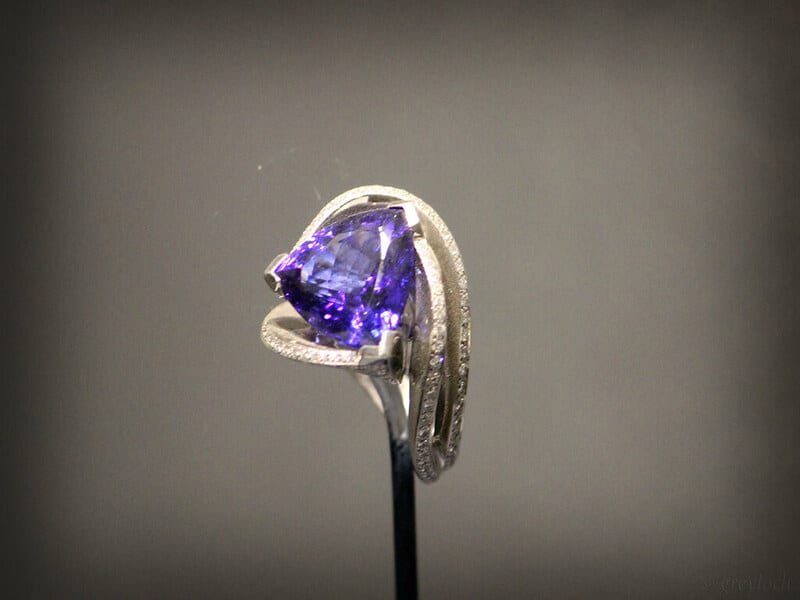
Grandidierite
In 1902, French mineralogist Alfred Lacroix discovered grandidierite in Southern Madagascar. He named it in honor of the French explorer Alfred Grandidier, an expert on Madagascan natural history. Although this blue-green gem has been mined in several places across the world, only Madagascar and Sri Lanka have produced gem-quality stones so far. It’s resistant to scratching, which makes it ideal for jewelry use. However, it’s incredibly scarce, so it’s highly unlikely for you to see faceted stones.
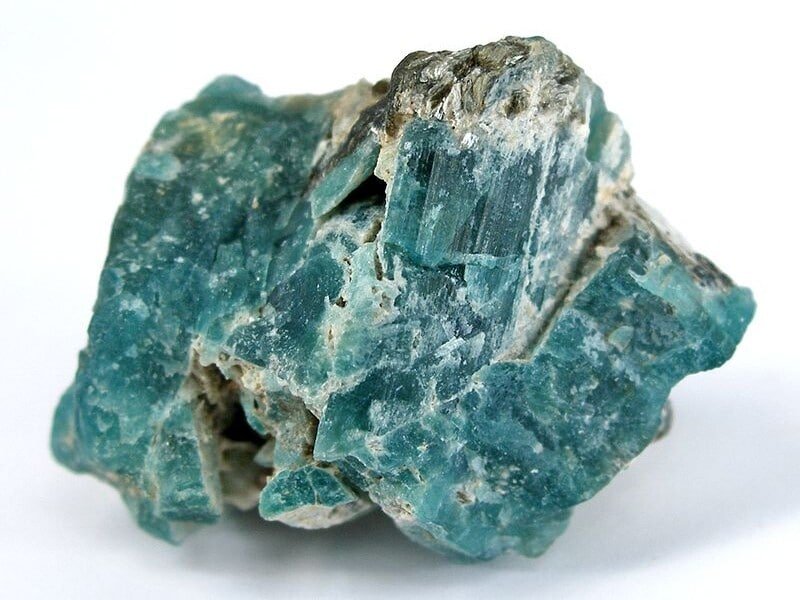
Red Beryl
Red Beryl got its name from the mineralogist Maynard Bixby, the man who found it in the Wah Wah Mountains of Utah in 1904. Around 95% of the stones unearthed each year are of lower grades. Only a few pieces are of gem-quality, and mineral collectors keep them. Red Beryl can come in red, deep rose, or raspberry pink colors. Only the soils of Utah, New Mexico, and Mexico have them. According to a Utah Geological Survey, only one Red Beryl is mined for every 150,000 gem-quality diamonds.
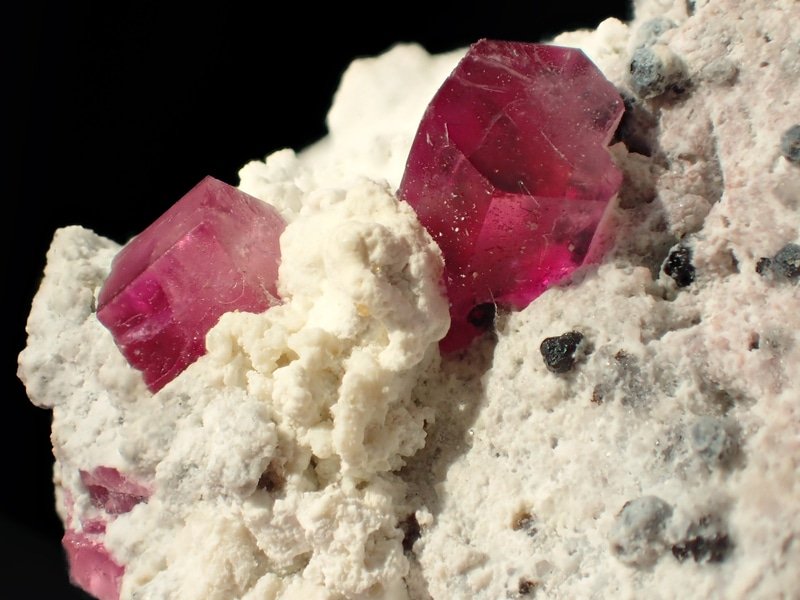
Alexandrite
With its color-shifting capabilities, people call it “emerald by day, ruby by night.” It can appear blue or green in daylight and turn red to purple in incandescent light. It was discovered in 1830 in the Ural Mountains in Russia, and the gemstone’s colors–red and green–were Russia’s imperial colors at the time. Hence, the stone got its name from Czar Alexander II, who was next in line as Russia’s emperor back then. After a few decades of mining, the stone’s original source has become depleted. Although alexandrite has been discovered in Brazil and a few other locations, it still remains one of the rarest gemstones in the world.
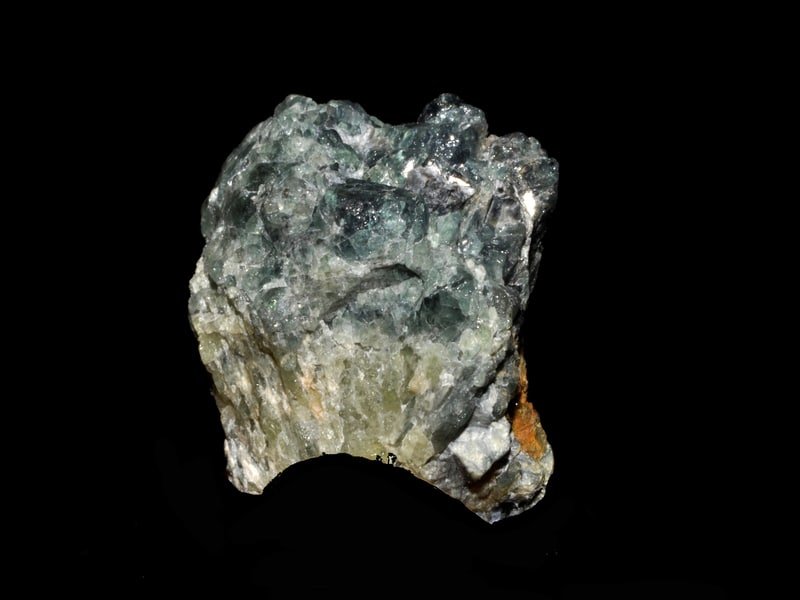
Choose the Right Gemstone for You
With so many gems out there, it could be challenging to pick the right one for you or your special someone. But now that you know the meaning behind your favorite gemstones and crystals, the selection process should be so much easier. Plus, if you believe in the cosmic benefits and symbolisms of these gems, wearing them will give you a sense of security and will boost certain aspects of your personality when you need it the most.
If your wedding anniversary is coming up, you might want to check this guide we created about anniversary gemstones and jewelry.
